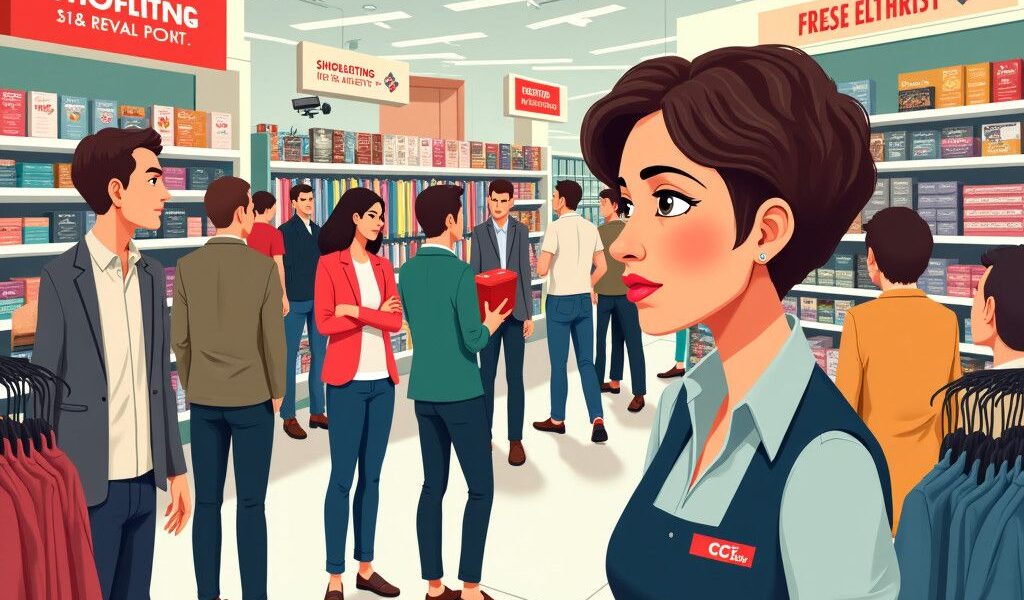In today’s retail environment, the challenge of loss prevention looms larger than ever before. According to recent findings from Zebra Technologies Corp.’s 17th Annual Global Shopper Study, a staggering 84% of retail associates express significant concern regarding loss prevention and the inadequate technology available to identify safety threats or potential criminal activity. With the retail landscape continuously evolving, it is crucial to explore these concerns and understand how technology can play a pivotal role in enhancing both security and customer experience.
The importance of loss prevention cannot be overstated. As stores face increasing incidents of shoplifting and other forms of theft, associates are feeling the pressure to not only prevent loss but also to maintain a positive shopping experience for customers. In this landscape, the integration of advanced technology becomes more than just an option; it’s a necessity. The study highlights that while 38% of retailers currently utilize AI-based prescriptive analytics for loss prevention, half of the surveyed retailers plan to implement such technologies within the next one to three years. This shift reflects a growing recognition of AI’s potential to provide insightful data and predictive analytics that can aid in mitigating losses.
It’s not just AI that retailers are banking on. The use of self-checkout cameras and sensors, computer vision, and RFID tags is on the rise, with predictions showing that 45% of retailers intend to adopt self-checkout cameras and sensors in the coming years. These technologies help identify unusual shopping behavior and flag potential thefts before they occur, enabling associates to intervene proactively.
On the consumer side, the findings present a mixed bag. While 78% of shoppers believe that self-checkout options enhance the shopping experience, 68% feel that these lanes are lacking in adequate associate support when issues arise. This gap indicates a need for improved training and resources for retail associates, empowering them to assist customers effectively amidst a high-tech shopping environment.
Moreover, the study reveals that 71% of shoppers share concerns regarding the limited help associates can provide, while an alarming 82% of associates report difficulties in finding timely support themselves. This discrepancy highlights the necessity for retailers to not only invest in technology but also ensure their associates are equipped to use these tools effectively. Nearly 90% of retail associates believe that having mobile technology tools can significantly enhance their ability to deliver a superior customer experience.
In light of these insights, the retail sector is at a crossroads. The necessity for technology investment is clear, with 75% of retailers planning to increase their technology allocations in 2025. By prioritizing the integration of proactive technology strategies, retailers can enhance their loss prevention efforts while also improving the shopping experience.
To illustrate the current challenges faced by retailers, consider a scenario involving a large supermarket chain that recently implemented AI-driven loss prevention measures. By analyzing historical data and real-time shopping behaviors, the system was able to detect patterns indicative of potential theft. Associates were alerted in real-time, allowing them to respond quickly, reducing incidents of loss, and instilling confidence in the store’s security measures. This example illustrates how leveraging technology can not only safeguard assets but also enhance customer trust in a retailer’s brand.
As retailers navigate these challenges, it’s clear that the combined approach of fostering a supportive work environment for associates while embracing innovative technology solutions can lead to substantial improvements in both loss prevention and customer satisfaction. The modern consumer desires a seamless shopping experience—one that is easy, efficient, and secure. Retailers that can align their technologies with the needs of their workforce and the expectations of their consumers will be well-positioned to thrive in this competitive marketplace.
Ultimately, the insights from Zebra Technologies’ study underscore an essential truth in retail: investing in technology and employee training is not just about management strategies but about building a resilient infrastructure that supports both associates and customers alike. By proactively addressing the concerns surrounding loss prevention, retailers can create an environment that protects their margins while ensuring a satisfying and safe experience for shoppers.












